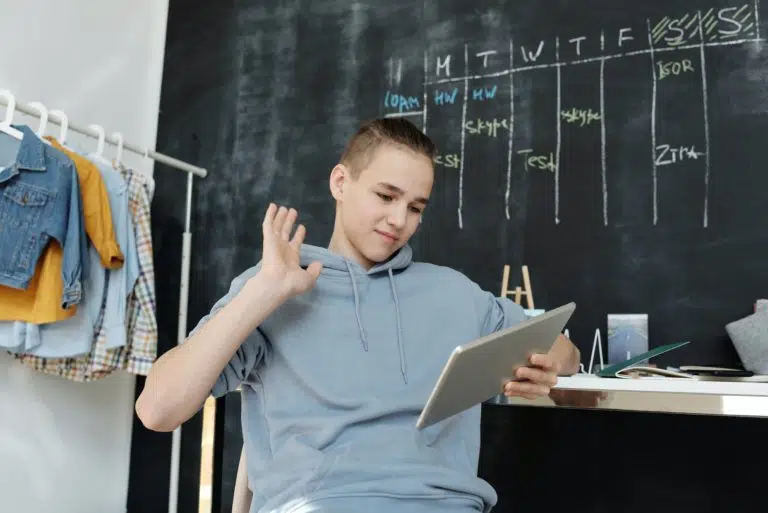As a parent of a child on the autism spectrum, you know how difficult it can be when it comes to communication. Sometimes, you would give anything to know what was bothering your child at that moment, or learn more about what happened at school that day, but for right now, that remains a significant challenge.
But does ABA therapy help with communication?
At Ready Set Connect, one of the most crucial areas of development we work within is communication. It’s how we as people share our wants and needs with each other.
It’s also important to remember that communication is a two-way street. An individual has to learn how to communicate their wants and needs to others, as well as learn how to understand what others want and need.
For children diagnosed with autism spectrum disorder (ASD), this is often a struggle. However, through the use of ABA therapy, children build these vital communication skills using a plan customized for them.
Communication and Autism
Your child on the autism spectrum frequently struggles with communication. Communication deficits may look different across the spectrum: a child may be completely nonverbal, they may use a sing-song voice and repeat every word they hear, they may be unable to make eye contact, or they may struggle to engage in a back and forth conversation.
Applied Behavior Analysis (ABA) allows us to individualize our approach for each child, working with them on appropriate and achievable goals. ABA can be used to teach a variety of communicative skills including but not limited to:
- Eye contact
- Following directions
- Requesting common objects
- Using alternative modes of communication (e.g. sign language or AAC device)
- Understanding common facial expressions
Communication and Eliminating Challenging Behaviors
Oftentimes, a challenging behavior can arise as a means for a child to try to communicate a want or need (e.g. banging on a window to say that they want to go outside, or taking off their pants to signal that they need to use the restroom).
Using ABA to teach a child an appropriate means of communication can lead to a decrease in the challenging behavior (e.g. asking with words to go outside, or taking a grown-up’s hand and leading them to the restroom).
Some behaviors also may not be as simple as a direct correlation to a want or need, as in the examples above. Teaching a nonverbal child how to communicate using an AAC (Augmentative and Alternative Communication) device, PECS (Picture Exchange Communication System), or sign language might help a child have fewer meltdowns because they are now able to find the words they could not share before. Teaching an otherwise shy child how to share and take turns with their peers might reveal a social butterfly with a love for playing with their friends.
Does ABA Therapy Help With Communication? ABA is All About Communication!
ABA in itself is all about communication between a child and their therapist. There is a bond and trust that is formed that teaches the child that others have important information to share.
A child also learns that what they do matters through reinforcement, thereby not only teaching them a specific skill, but teaching them that interacting and communicating with others is important and helpful.
Communicating with Peers
Here at Ready, Set, Connect, we pride ourselves in having children work and play in a group setting. While each child has a one-on-one ABA therapist by their side, they are able to practice their communication skills and play with their peers in a controlled setting.
Whether it’s taking turns going down the slide, pretending to cook a meal together in a play kitchen, or following the rules of a board game, our children are communicating and learning together. These skills all come from a strong foundation that can be built through ABA.
For more information on how ABA therapy can help your child with communication skills, don’t hesitate to reach out here.

